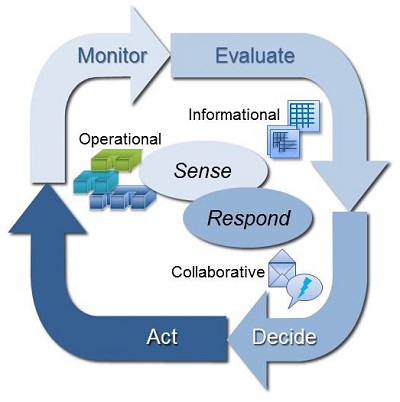
Death of a Decision Maker
Business is all about decisions, but can those decisions be automated? Get ready for decision-making machines.
- By Barry Devlin
- February 11, 2016
Who are the decision makers in your organization? You may think first of managers and executives or perhaps of data scientists. However, on deeper reflection, what are all those spreadsheet users doing if not (trying to) make decisions? What about the sales people and call center reps? They also make decisions continuously, albeit small ones, such as choosing the next question to ask or the next product to offer. If you take it one step further, don’t all those operational systems and retail websites also make many simple and repetitive decisions second after second, day after day?
These questions serve to highlight two facts: (1) business is all about decisions -- big and small -- and pretty much everybody makes them regularly and (2) we have been gradually automating them since the beginning of the computer era. These principles underlie an important question for 2016 and the coming years -- a question that should be exercising the minds of every CEO and CIO already: who or what will be making the majority of tomorrow’s decisions and what should you do about it?
A report published in conjunction with this year’s World Economic Forum meeting in Davos, makes interesting reading. In The Future of Jobs, the authors declare that “the Fourth Industrial Revolution is interacting with other socio-economic and demographic factors to create a perfect storm of business model change in all industries, resulting in major disruptions to labour markets.” The most heavily affected type of work will be office and administrative work with a decline of 4.8 million jobs (an almost 5 percent drop) worldwide between 2015 and 2020.
McKinsey has also begun research in this area. A preliminary report in November 2015 notes that “as many as 45 percent of the activities individuals are paid to perform can be automated by adapting currently demonstrated technologies ... we discovered that even the highest-paid occupations in the economy, such as financial managers, physicians, and senior executives, including CEOs, have a significant amount of activity that can be automated” (my emphasis).
Of course, neither of these point specifically to decision making as the area for automation and/or displacement. The analysis of job activities has not (yet) gone that deep. However, taking a view from a BI standpoint, we can see that decision making consists of multiple steps that are ripe for automation from data collection and preparation through analysis and ideation, from actual decision making and implementation to assessment of the actual outcome of the decision in the real world. I call this the MEDA -- monitor, evaluate, decide, and act -- model of decision making.
Traditional BI tools focus in the monitor and decide phases, simplifying and automating much of the preparation work. Operational BI and decision management extend even into the decide phase, but so far only where the decisions are of limited value and can be easily codified in if-then-else logic.

Figure 1: The MEDA model of decision making.
Today’s evolving artificial intelligence, machine learning, and cognitive computing very obviously extend the potential for automation to much of the analysis, outcome evaluation, and recommendation work in the evaluate and decide phases. IBM’s Watson, for example, undertakes extensive analysis of data and text to offer recommendations in a wide range of scenarios: medicine, financial systems, agriculture, infrastructure management and more.
The outlook is that in operational or real-time applications, the human decision maker will be largely displaced as more complex decision models can be automated. In tactical decision making, the role of the human will be significantly reduced, as machine learning tools gather sufficient data to closely correlate business situations to successful outcomes of decisions made. Only in strategic decision making will the human role remain substantial, but it appears that much of the preparation and analysis work can be automated and the role of the executive reduced to choosing one of a number of actions favored by the algorithm.
CEOs need to start preparing for the organizational impacts of this substantial shift of work from people to machines. Meanwhile, CIOs must begin to search for replacements or extensions for current BI tooling in the rejuvenated field of artificial intelligence. The speed of innovation in this field is such that major disruption can be expected in as little as two to three years.